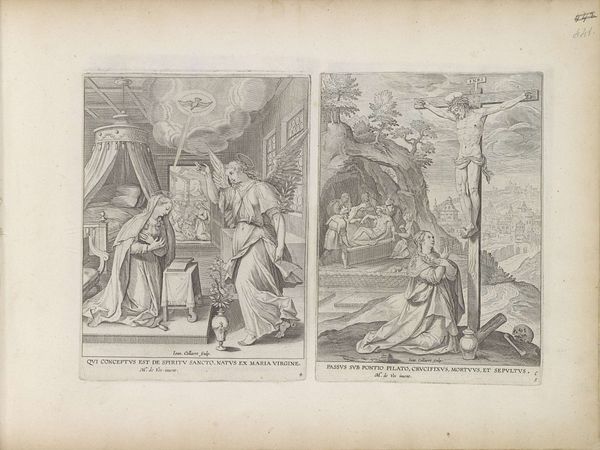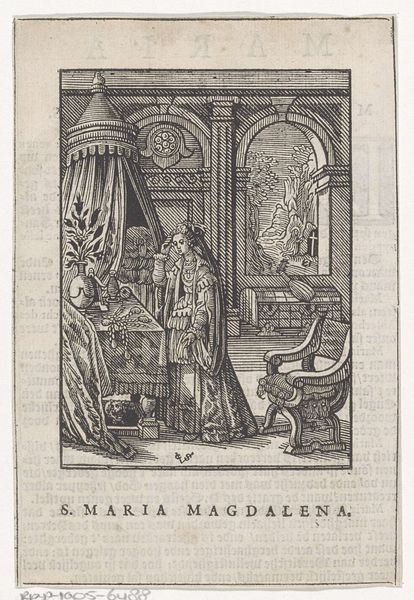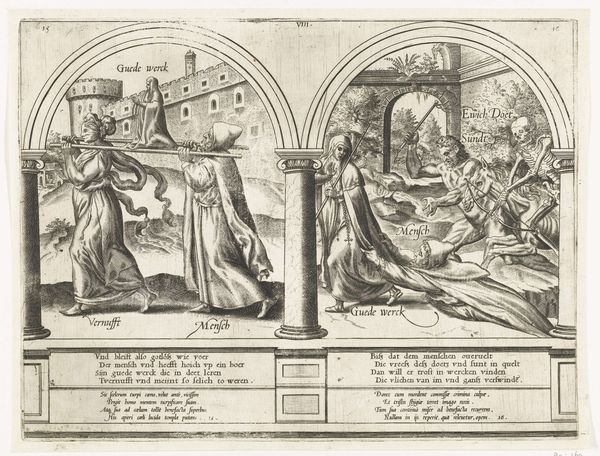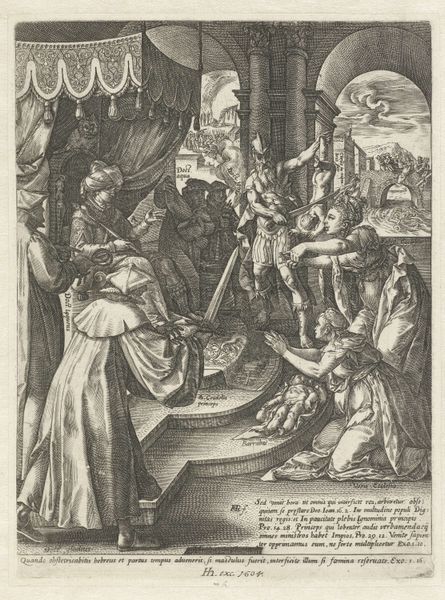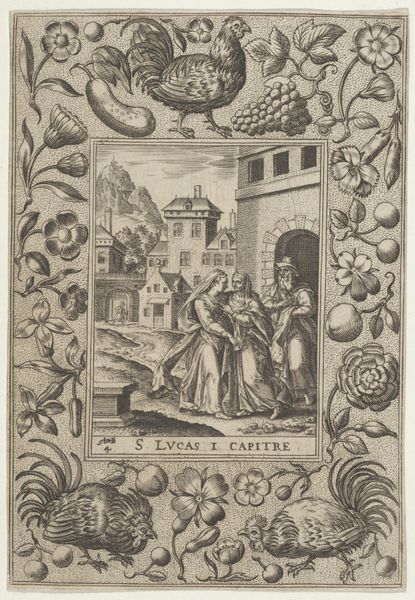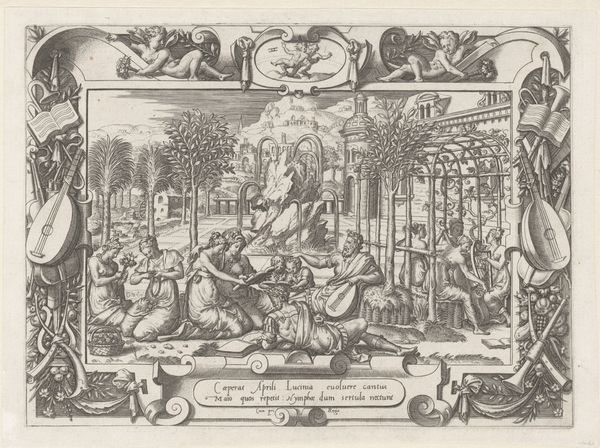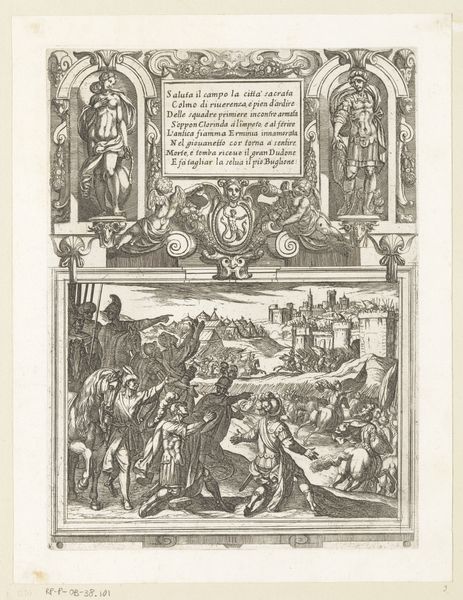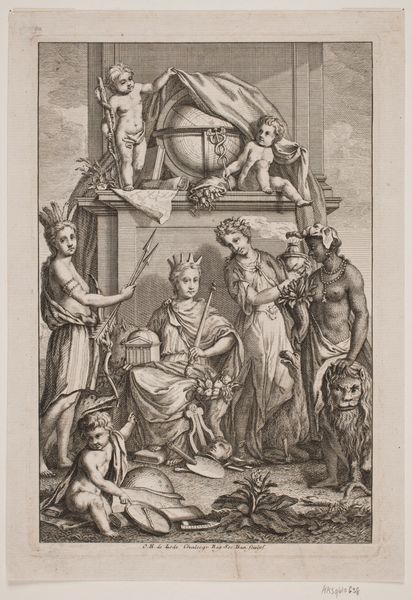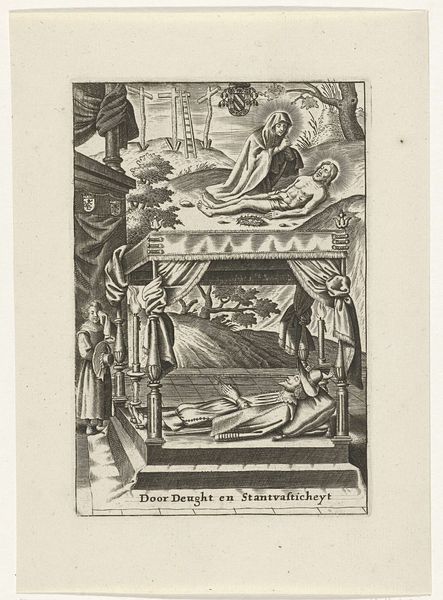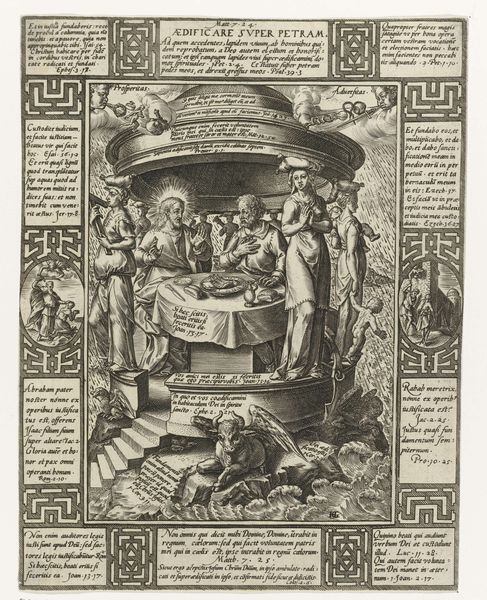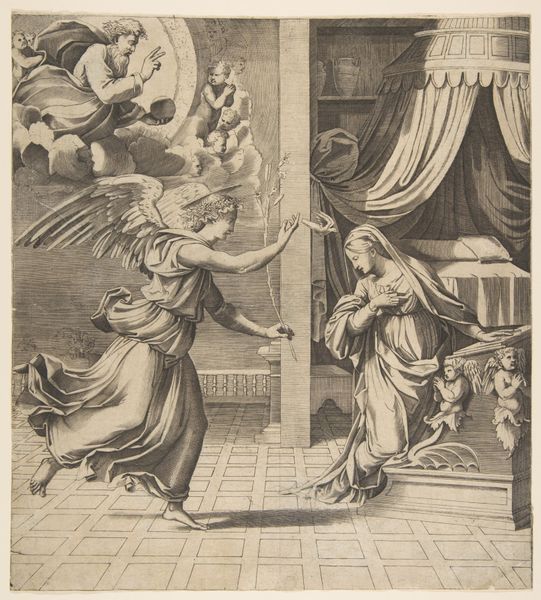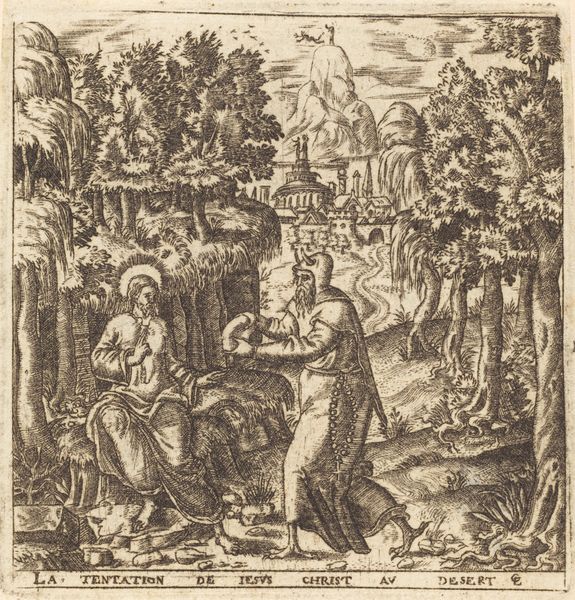
print, engraving
#
medieval
#
allegory
# print
#
figuration
#
history-painting
#
northern-renaissance
#
engraving
Dimensions: height 262 mm, width 203 mm
Copyright: Rijks Museum: Open Domain
Curator: Here we have Pieter Huys's "The Temptation of Saint Anthony," an engraving created sometime between 1560 and 1580, now held in the Rijksmuseum. Editor: Well, immediately, it looks chaotic and unsettling! Lots of small, busy scenes... the devilish figures feel both scary and sort of comical, though I'm not entirely sure what to make of that lady standing in front of Saint Anthony. Curator: The entire composition is laden with allegorical meaning, representing Saint Anthony's spiritual struggles against temptation. Huys depicts not just one moment, but various trials in a single, albeit intricate, frame. It is history painting but using figuration for its symbols, and you’re right: the overall theme feels, dare I say, overwhelmingly medieval! Editor: Absolutely. Focusing on the material, the fact that it’s an engraving is significant. It speaks to a desire for wider dissemination, making such morality tales available beyond the wealthy elite. It allowed, using printing as its main tool, to depict these terrifying scenarios in everyday life... This print becomes almost like a… pamphlet, with a dire warning printed on it. Curator: True. Considering his position as a Northern Renaissance artist, Huys certainly uses that traditional style to push his theme—notice the composition is organized into vignettes, not unified in one action but working towards one singular moral: to follow a holy life. Each detailed area tells a little piece of his broader legend and the sins he resisted to get to a place of grace, making the artwork become almost like an origin story about a hero. Editor: And the materiality reflects that – the crisp lines of the engraving lending an air of precision, a clarity to the moral lesson that it tries to transmit. I find myself thinking about the skilled labor involved in creating the plate, the process of transferring the image... the making of this work must have been equally devoted. Curator: It definitely begs the question of who produced this work for whom... As we are confronted with it today, this engraving reminds us of how anxieties about morality were marketed and distributed in early modern Europe, maybe even to a higher extent than today! Editor: Indeed. From examining the texture and materials of this particular item, as well as looking through the composition's medieval theme, we’ve begun to tease out not just a portrait of sanctity but also a commentary on its complex, contested place in society and commerce.
Comments
No comments
Be the first to comment and join the conversation on the ultimate creative platform.

